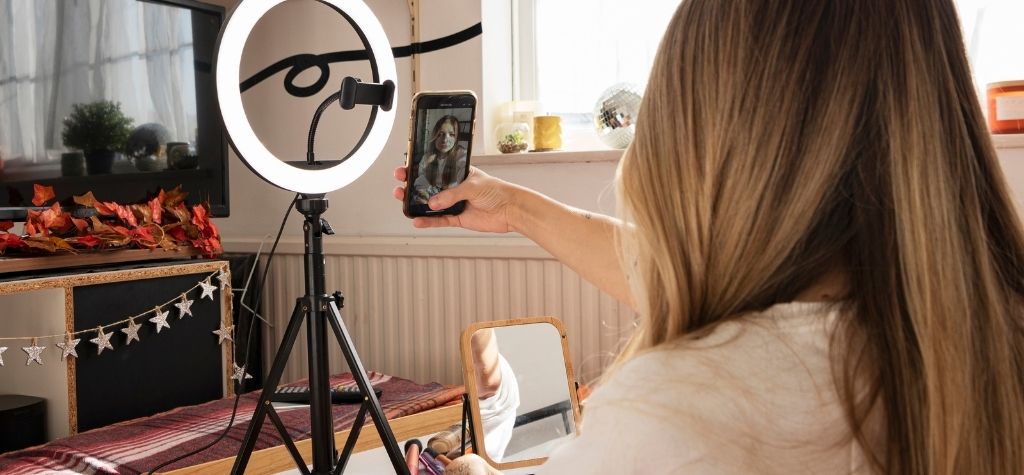TikTok has changed how people share health tips. From beauty regimens to fitness hacks, everything now comes in bite-sized clips—and eye care is no exception. But when it comes to your vision, not everything trending is safe. In fact, many popular “eye hacks” circulating on TikTok are raising serious red flags among eye doctors.
In this article, we reveal the six most dangerous viral eye tricks and why optometrists are urging people to steer clear.
Why TikTok Isn’t a Trusted Source for Eye Care

Entertainment vs. Expertise
TikTok content is designed to be catchy, not clinically sound. While some creators genuinely want to help, most lack medical training. This leads to misinformation that spreads quickly, especially when a tip “looks” like it works or promises quick results.
The Consequences of DIY Eye Hacks
Your eyes are delicate. Introducing foreign substances, excessive pressure, or unapproved treatments can lead to dry eye, irritation, infections, or even permanent vision loss. Many hacks aren’t just useless—they’re actively dangerous.
6 TikTok ‘Eye Hacks’ Optometrists Beg You to Ignore
Let’s break down the top six offenders, along with the science (or lack thereof) behind them:
1. Using Lemon Juice to Brighten Eye Whites
Creators claim that lemon juice clears up yellowing or dull whites of the eyes. But lemon juice is highly acidic and not meant to contact mucous membranes.
Optometrists warn: This can cause chemical burns, intense irritation, and even corneal ulcers. The whites of your eyes may look inflamed—hardly the brightening effect you were after.
2. Taping Eyelids for DIY Ptosis ‘Fix’
Some influencers use skin-safe tape or glue to lift drooping eyelids in hopes of a more alert, youthful look.
The truth: Temporary adhesion doesn’t address the muscle weakness behind ptosis. Repeated taping can damage eyelid skin, stretch muscles, or cause allergic reactions.
Doctors say: Use cosmetic methods like makeup or consult an oculoplastic surgeon for safe correction.
3. Eye-Rolling to Improve Vision Naturally
A viral claim suggests that repeatedly rolling your eyes in certain directions will strengthen eye muscles and improve vision.
Fact-check: Eye rolling doesn’t fix nearsightedness, farsightedness, or astigmatism. Vision clarity comes from the cornea and lens—not muscle movement.
What it might help: Eye strain or fatigue, in minor cases. But that’s it.
4. Using Saline or Contact Lens Solution to “Clean” the Eye Daily
Some TikTok users suggest flushing your eyes every morning with contact solution to keep them clean and refreshed.
Optometrists caution: Your eyes clean themselves via tears. Over-washing can strip the tear film, causing dryness, stinging, and vulnerability to infection.
Use artificial tears only when needed—and not as a daily ritual unless prescribed.
5. DIY Eye Lightening Drops from Unknown Brands
Another disturbing trend involves using drops from shady brands to lighten dark irises or remove redness.
Warning: These drops are often unregulated and imported illegally. They may contain steroids, vasoconstrictors, or toxic chemicals that harm your retina.
Doctors say: Never use non-prescription products in your eyes, especially if they come from TikTok shops or third-party sellers.
6. Using Frozen Spoons to ‘Cure’ Eye Strain
Holding cold metal spoons over the eyes may reduce puffiness—but that’s about it.
Cold compresses help, but frozen spoons offer little beyond short-term comfort. They won’t treat digital eye strain, dryness, or visual fatigue caused by screens.
Optometrists Speak Out: Why These Hacks Are Harmful

Short-Term Trends, Long-Term Damage
Dr. Nina Patel, an optometrist in Los Angeles, says:
“We’re seeing more young adults coming in with infections, dry eye syndrome, or chemical injuries because of what they saw online.”
When to See a Real Eye Doctor Instead
Redness, pain, blurry vision, or discharge should never be handled at home. Seek medical attention—especially before experimenting with viral trends.
Safe Alternatives Backed by 2025 Science
Eye Massage Techniques Recommended by Experts
Simple techniques like warm compresses, blinking exercises, and palming (cupping your eyes with your warm palms) can help without danger.
Blue Light Management & Eye Exercises
Install blue-light filters, take screen breaks, and use the 20-20-20 rule (every 20 minutes, look 20 feet away for 20 seconds) to combat fatigue.
FAQs on TikTok Eye Hacks and Vision Safety
1. Are any TikTok eye tips actually safe?
Some, like blinking exercises or warm compresses, are okay—but check with a doctor first.
2. What’s the most dangerous hack right now?
Anything involving foreign chemicals, like lemon juice or mystery drops.
3. Can ice help with tired eyes?
Yes, cold compresses reduce swelling, but don’t expect them to fix strain or vision issues.
4. Is it safe to clean my eyes daily with saline?
Only under medical advice. Over-cleaning can cause dryness.
5. What should I do if I tried a harmful hack?
Stop immediately and consult a medical professional or optometrist.
6. Why do these hacks gain popularity despite risks?
They look simple, quick, and dramatic in videos—but most are medically unsound.
Conclusion: Think Before You Blink—Stop Falling for Viral Vision Fads
Your eyes are irreplaceable. Viral TikTok trends may offer flashy “fixes,” but when it comes to your vision, there are no shortcuts. Protect your sight with science-backed care, professional advice, and common sense.

